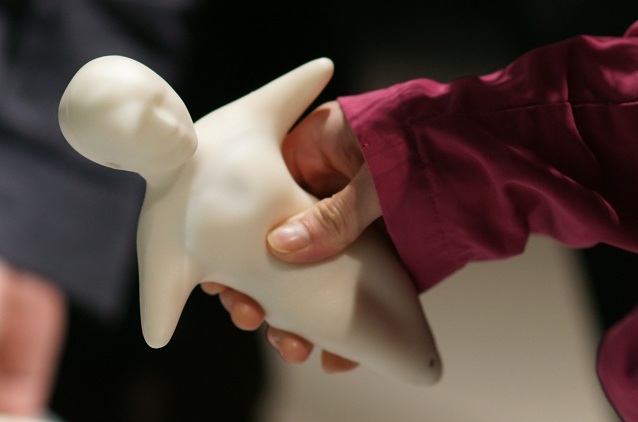
Elfoid -- a REAL android phone
Robotics researchers from Osaka University have teamed up with NTT Docomo and Qualcomm to develop a handheld humanoid phone that brings a new dimension to mobile communications. A prototype of the device -- called "Elfoid P1" -- was unveiled at a presentation in Tokyo on March 3.
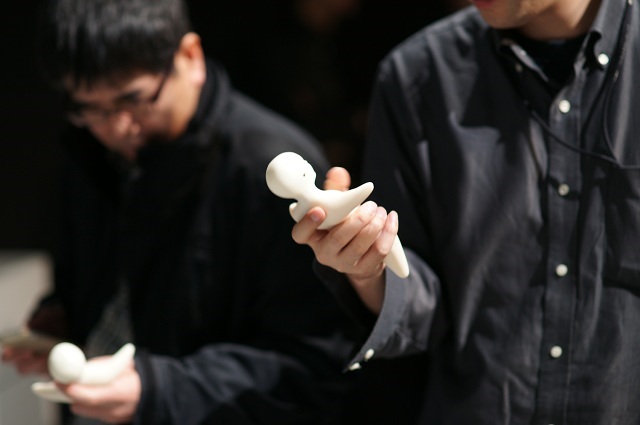
The Elfoid phone is a miniature version of the Telenoid R1 robot developed last year by a research team led by Osaka University professor Hiroshi Ishiguro. The current prototype measures 20 centimeters (8 in) long, is covered in a soft fleshy urethane skin, and has the same genderless and ageless appearance as the Telenoid. The control buttons are embedded in the chest, which glows green when the Elfoid is in use.
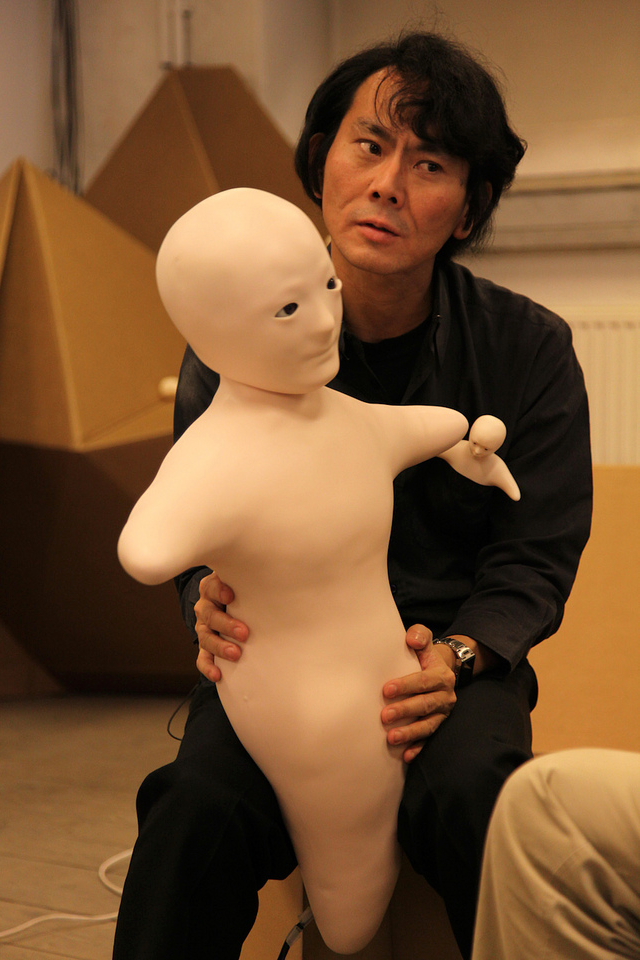
Dr. Ishiguro with Telenoid and Elfoid [Photo by: eSeL.at]
Like the full-sized Telenoid robot, the Elfoid handset is designed to add an element of realism to long-distance communication by recreating the physical presence of a remote user.

[Photo: Ars Electronica]
Equipped with a camera and motion-capture system, the Elfoid phone will be able to watch the user's face and transmit motion data to another Elfoid phone, which can then reproduce the face and head movements in real-time.
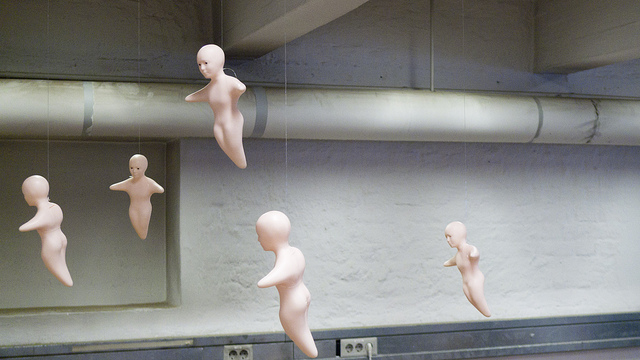
[Photo by: d_&_r]
The current prototype is unable to move, but future versions will incorporate tiny motors and parts made from shape-memory alloys, allowing the Elfoid to move its eyes, mouth, neck and arms. Other features will include a temperature sensor, accelerometer, and an easy-to-use voice and gesture based interface.
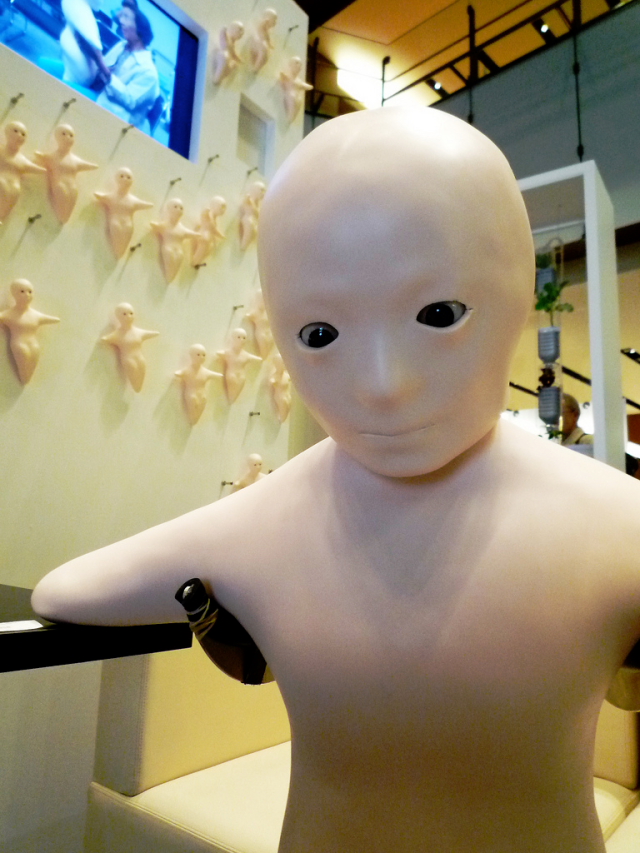
[Photo by: antjeverena]
The developers hope to have a fully operational Elfoid mobile phone within five years.
[Sources: ATR, Gizmodo Japan, Yomiuri]


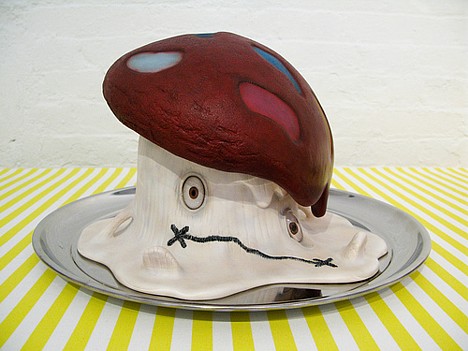
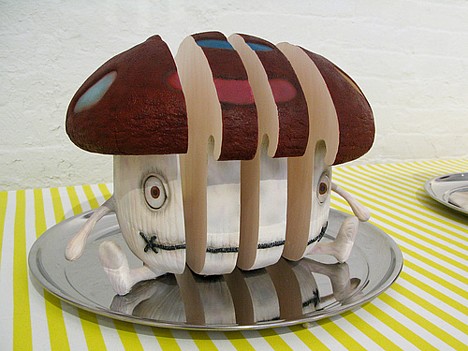


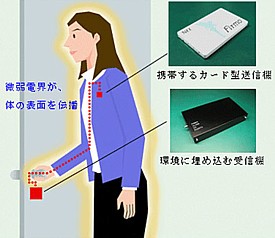 NTT has begun selling a device that transmits data across the surface of the human body and lets users communicate with electronic devices simply by touching them, the company announced on April 23.
NTT has begun selling a device that transmits data across the surface of the human body and lets users communicate with electronic devices simply by touching them, the company announced on April 23. 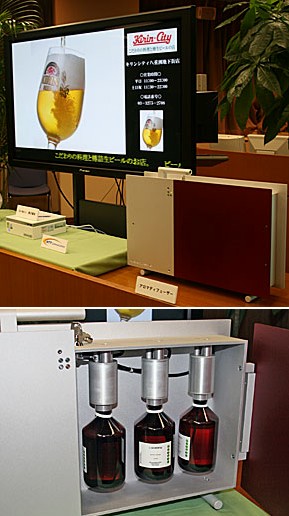 NTT Communications (NTT Com) has announced plans to begin testing its latest aroma-emitting digital sign technology, called "Kaoru Digital Signage," in Tokyo. The tests, which will take place outside the Kirin City Beer Hall in the underground Yaesu Shopping Mall (JR Tokyo station) from October 21 to the end of December, will involve internet-controlled signs that display electronic imagery of beer while emitting aromas such as lemon and orange. The researchers aim to study the sign's effectiveness in drawing passersby into the restaurant.
NTT Communications (NTT Com) has announced plans to begin testing its latest aroma-emitting digital sign technology, called "Kaoru Digital Signage," in Tokyo. The tests, which will take place outside the Kirin City Beer Hall in the underground Yaesu Shopping Mall (JR Tokyo station) from October 21 to the end of December, will involve internet-controlled signs that display electronic imagery of beer while emitting aromas such as lemon and orange. The researchers aim to study the sign's effectiveness in drawing passersby into the restaurant.  On June 20, NTT Docomo and am/pm Japan announced plans to begin equipping convenience stores with cellphone recycling bins, making it easier for people to recycle their unwanted devices.
On June 20, NTT Docomo and am/pm Japan announced plans to begin equipping convenience stores with cellphone recycling bins, making it easier for people to recycle their unwanted devices. 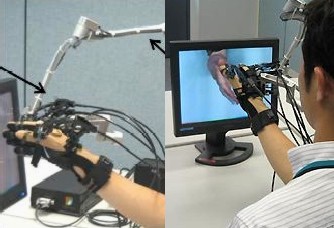 Researchers at NTT Comware have just made virtual reality a little more real. On June 20, the company unveiled a 3D display system that reproduces the physical feel of three-dimensional video by means of an actuator glove worn on the hand, allowing viewers to literally reach out and touch the person or object on the screen.
Researchers at NTT Comware have just made virtual reality a little more real. On June 20, the company unveiled a 3D display system that reproduces the physical feel of three-dimensional video by means of an actuator glove worn on the hand, allowing viewers to literally reach out and touch the person or object on the screen. 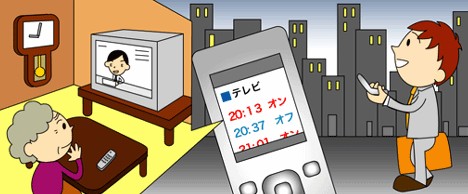
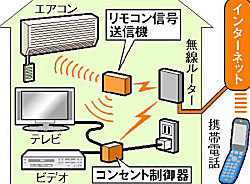 In addition to being able to control the room temperature, blast the stereo and program the video recorder -- all while outside the home -- users can also check the current operating status of each device and view records of how each device has been used. According to NTT-Neomeit, this ability to monitor device usage provides a convenient way for users to keep tabs on the activity of their elderly parents from afar.
In addition to being able to control the room temperature, blast the stereo and program the video recorder -- all while outside the home -- users can also check the current operating status of each device and view records of how each device has been used. According to NTT-Neomeit, this ability to monitor device usage provides a convenient way for users to keep tabs on the activity of their elderly parents from afar.